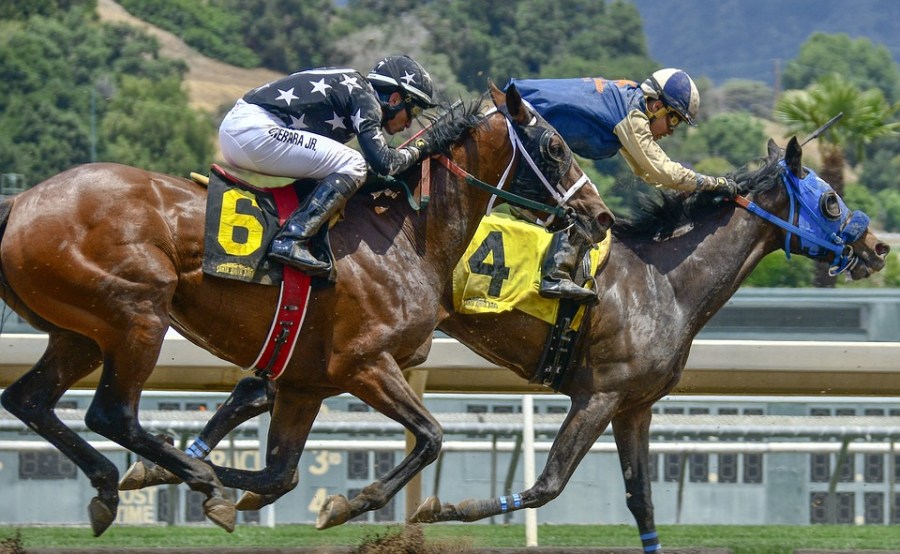Easy Things to Make for a Horse

From the Kentucky Derby to the local racetrack, there are a lot of ways to get interested in horse racing. Watching the races is fun, but once you see a few you probably want to get your feet wet with some real betting. Looking at betting sheets and trying to understand all the details can be overwhelming. Instead, focus on basic bets and work your way up to more complex wagers. Here's what you need to know to get started at the horse track.
The Basic Bets: Win, Place and Show
If you are new to betting on horses, you might want to start simple. The easiest is a "win" bet. Of course, that means you are choosing that horse to win the race. The odds for a win are easy to see on the screen of televised races or on the board at a local track. If you think a horse will do well but might lose by a nose, put in a "place" bet. For a place bet, you need the horse to come in first or second. These pay off at a smaller margin than a win bet. Finally, if you're pretty sure a horse will do well but you don't know how well, consider a "show" bet. A show bet pays off if the horse finishes first, second, or third. The winnings won't be as high, but you'll get a thrill rooting for the horse. Most win, place, and show bets require a minimum of $2 per wager, but some tracks offer them for $1.
If you're feeling really lucky, you might consider an exotic bet. These require you to pick horses to finish in a certain order. An "exacta" is when you choose the winning and second place horses in order. A "trifecta" is picking the first, second, and third place horses in order. A "superfecta" is when you choose four horses to finish first, second, third, and fourth in order. You can also choose two horses to place first and second in either order. That bet is called a "quinella," and costs the same as making two exacta bets.
How to Place a Bet at a Track
If you're at a racetrack, you have two ways to place a bet. One is to use a human teller, and the other is to use the self-serve computer teller. If you're new, it's best to start in person. Get in line and have your cash ready. When you get to the teller, you'll need to let them know what bet you're making. Here's what you should have ready: The racetrack (if it's not the one you're at) The race number The amount you're wagering The type of bet, for instance "show" The horse's number in the race Tracks have multiple races back to back, and each race has a different list of horses. You can purchase a paper program so you know what's coming up, or you can pay close attention when the race is announced. So you might say to the teller, "Race Eight, a two-dollar win bet on Number Six." That means in the eighth race at the local track, you're betting two dollars that horse six will win. The teller will take your money and give you a ticket showing your bet. Keep the ticket safe – you'll need it to cash in if you win.
Betting at Outside Tracks
Sometimes you're at a casino or racetrack that gives you a chance to bet on races outside the area that you watch closed circuit TV. Televised racing today allows you to bet on tracks all around the world. For instance, the TV may have a channel showing the Flemington races today, and another channel may have Woodbine live racing. Still another might show the Melbourne races today. To bet wisely, you'll need to get the appropriate guide. For instance, the Flemington races form guide will give you the information on those horses. You can most easily bet these races using the self-serve computer, but you should also be able to go to the teller and give them the name of the track along with the race number for your bet.
Choosing a Winning Horse
Like most forms of gambling, there's no sure way to win at horse racing. You can have a great time just going to the track, picking names you like or horses you find attractive, and rooting for them to win. However, if you're interested in digging a bit deeper, you can use your purchased program to find out more about the horses. There's a ton of information in it, and although the lingo takes time to learn, you can find out a lot about a horse's past performances. You can also pay attention to the odds that are announced, especially as the race is about to start. The odds tell you how likely a horse is to win. Statistics show that if you choose the highest-favored horse and place a "show" bet (first, second, or third) you'll win 67 percent of the time. Of course, you won't bring home a lot of cash, but you'll have fun. It's a great way to bet wisely.
Source: https://www.questionsanswered.net/article/how-to-bet-on-horse-races-for-beginners?utm_content=params%3Ao%3D740012%26ad%3DdirN%26qo%3DserpIndex&ueid=94507a53-6f64-4567-b342-abae8b8fae38